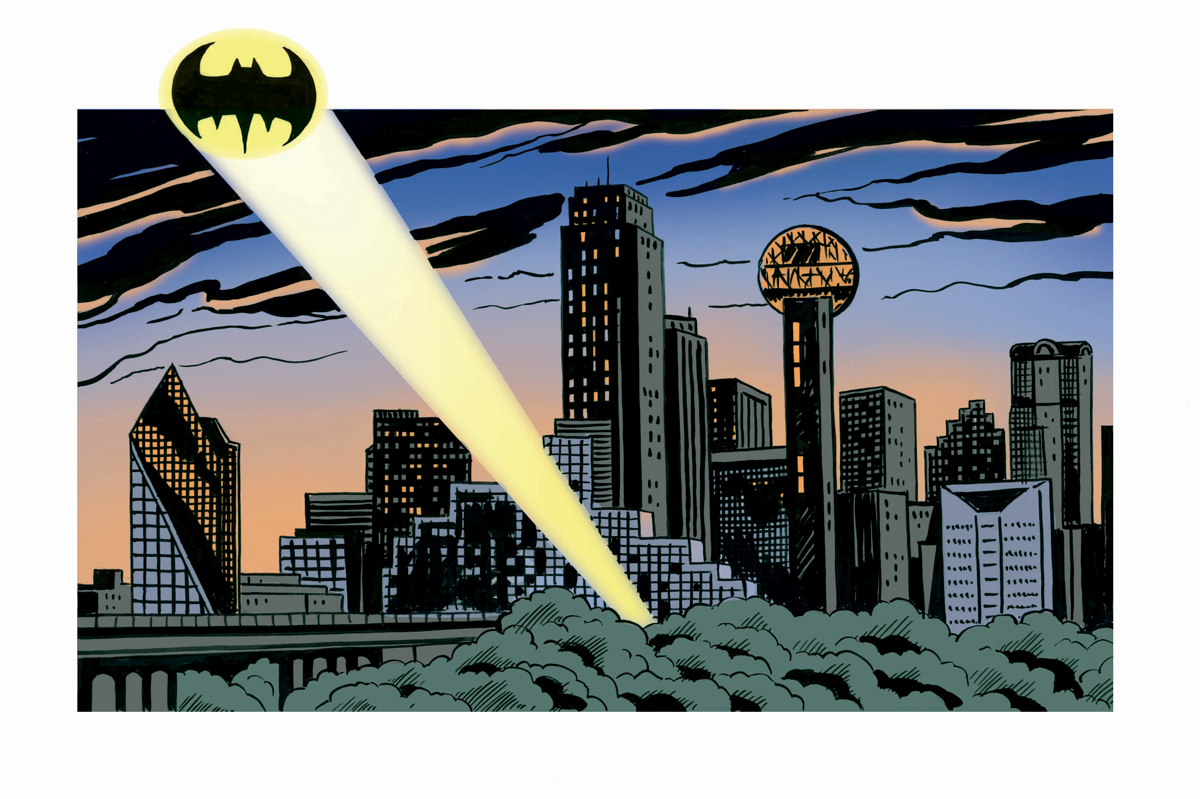By the summer of 2016, Mayor Mike Rawlings was forced to admit what many had known for years: Dallas had a stray dog crisis. To determine its extent, the city hired the Boston Consulting Group, known for creating the growth-share and advantage matrices, and also for being good at math. In August, they released their findings. There were nearly 9,000 loose dogs in southern Dallas.
Rawlings knew he shouldn’t rely on the police to handle it. Earlier in the summer, Dallas Police Chief David Brown had complained, rightly, that every difficulty Dallas encountered—schools, mental health, homelessness—it asked the police to step in and fix. After considering various options, including a public-private task force headed by Walt Humann, Rawlings finally settled on a bolder strategy. What Dallas needed, he said, was its own costumed vigilante—a sort of dog-specific super cop. Rawlings launched a nationwide search to bring in a “world-class” crime fighter.
After four months, three candidates emerged: Green Arrow, The Emerald Archer of Star City; Batman, Gotham’s Dark Knight; and Assistant City Manager Ryan Evans, who had recently taken up CrossFit.
Several City Council members pushed for Evans to win the job because he was already familiar with the city, but Rawlings pressed them to hire Batman. To convince him to come to town, the Council agreed to ask residents to vote on a bond initiative that would raise enough money to build a “world-class” Batcave. Mayor Rawlings also sent him a new iPad with “BIG Things Happen Here” laser-engraved on the back.
Watercolors of the new Myrna and Robert Schlegel Batcave, designed by Rem Koolhaas and Joshua Prince-Ramus as part of a multi-use site in The Cedars, were unveiled at a black-tie gala on the Ronald Kirk Pedestrian Bridge. Mayor Rawlings also announced plans for a “world-class” Bat-Signal to accompany it, which would be designed by Santiago Calatrava and paid for, he assured, with private funding.
Following complaints from other North Texas mayors, it was decided that the new Kandis and Bill Hutchinson Bat-Signal, located just north of White Rock Lake, would be tall enough that its light could reach as far as Arlington. Concerned that the new structure would affect some residents’ views of White Rock, a second, smaller lake—dubbed Lisa and Kenny Troutt Lake—was added to the design. Because of the increased expense of excavation and engineering, the Bat-Signal project was folded into the Batcave bond package.
To entice voters to spring for all of it, plans for the Bat-Signal were expanded to include a sprayground, a soccer field, a zip-line adventure course, a bocce ball court, a climbing wall, an open-air ice skating rink, a dog run, a go-kart track, a karate dojo, an amphitheater, a food truck park, a putting green, a reflecting pool, a Zen garden, a table where you could play one of those oversize Jenga games, a Frisbee lawn, a petting zoo, a phone-charging station, an improv troupe, a daily reenactment of the JFK assassination, and three signature water features, each named for one of the Perot family’s bison. Also, to handle increased traffic, a six-lane toll road would be constructed over White Rock Lake, from the spillway to Northwest Highway.
“Look, we can’t just, you know, put a searchlight on the top of Reunion Tower and call it a day,” Rawlings told the Dallas Morning News’ Robert Wilonsky in a 3,000-word blog post that for some reason ended with a YouTube clip of Boz Scaggs performing “Breakdown Dead Ahead” in 1980. “If we want, and I believe we do want, to be the kind of world-class city that deserves a world-class crime fighter like Batman, we need a world-class Bat-Signal. And, yes, we need a world-class home for it.”
As plans for the Big Bat, as it came to be called, grew more elaborate, months turned into years, with no progress. Meanwhile, dogs from across the country began pouring into Dallas, wrestling for control over what was known as an “open town.” Eventually, not knowing what else to do, city leaders ceded the entirety of the Great Trinity Forest to the dogs, the number of which grew to more than 30,000. They were split into three main factions: a dominant clique (mostly pit bulls) that controlled the east side; a friendlier group (largely Labradors) that ran the west; and a surprisingly scrappy crew of smaller dogs—headed by a Bichon Frise that once belonged to former Channel 5 anchor Mike Snyder—that carved out a chunk of territory in the north.
Batman never did show up.





